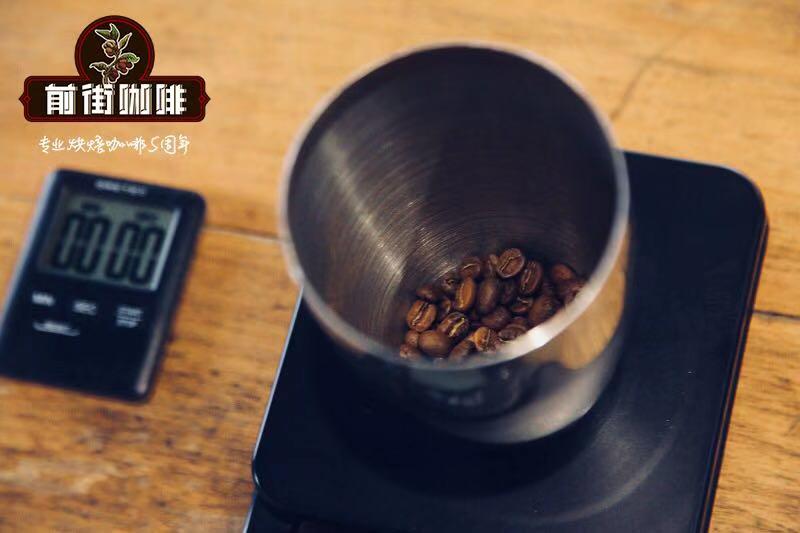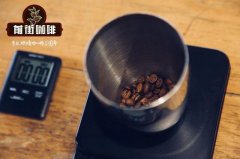Does Kaddura belong to Arabica? what are the characteristics of Kaddura coffee?

Professional coffee knowledge exchange more coffee bean information please follow the coffee workshop (Wechat official account cafe_style)
Brief introduction of Qianjie-Kaddura Coffee varieties
Kaddura (Caturra), a natural variety of Arabica variety bourbon, was discovered in Brazil in 1937. Its tree is not as tall and shorter as bourbon. Due to inheriting the blood of bourbon, the resistance is relatively weak, but the yield is higher than that of bourbon. Although found in Brazil, Kaddura is not suitable for growing in Brazil, so it is not planted on a large scale in Brazil, but is popular in Central and South America, such as Colombia, Costa Rica and Nicaragua. Kaddura is widely planted in Colombia, Costa Rica and Nicaragua.
It can be said that the variety Kaddura appears more frequently in American beans. This is a variety of bourbon, found in Brazil in 1937, with better production capacity and disease resistance than bourbon, plus shorter trees for coffee farmers to harvest.
But soybean prices soared in the 1970s, and farmers switched to Kaddura to increase production, which was popularized by the Brazilian and Colombian authorities and yielded fruitful results. The acceptance of Kaddura by farmers means a great change in planting technology. Brazil and Colombia switched to high-yield, high-density sun-exposed planting. in 1990, 14 million bags of coffee beans could be harvested on 1 million hectares, increasing production capacity by 60%. No wonder Kaddura, with high production capacity and high quality, has become a variety relied on by various producing countries.
Kaddura is suitable for planting in the high altitude area from 700m to 1700 m. It has strong adaptability to altitude, but the higher the altitude, the better the flavor, and the production capacity is relatively reduced. In academic circles, some people call Kaddura the bourbon of dense and exposed version, which can be said to hit the nail on the head.
In short: Qianjie is a coffee research hall, happy to share the knowledge about coffee with you, we share unreservedly just to make more friends fall in love with coffee, and there will be three low-discount coffee activities every month. The reason is that Qianjie wants to make more friends drink the best coffee at the lowest price, which has been Qianjie's tenet for 6 years!
END
Important Notice :
前街咖啡 FrontStreet Coffee has moved to new addredd:
FrontStreet Coffee Address: 315,Donghua East Road,GuangZhou
Tel:020 38364473
- Prev

Taste characteristics of Salvadoran coffee varieties
Professional coffee knowledge exchange more coffee bean information please follow the coffee workshop (Wechat official account cafe_style) front street-Salvadoran coffee varieties introduction first cultivated by Salvadoran researchers in 1958. Pacamara is a rare excellent variety under artificial breeding, which is better than blue, and perfectly inherits the advantages of the mother plant. It not only has the excellent taste of Pacas species, but also has a good taste.
- Next

What kind of coffee is Sachmo? the characteristics of the variety of Sacramento.
Professional coffee knowledge exchange more coffee bean information please follow the coffee workshop (Wechat official account cafe_style) Front Street-Sachimo Coffee Variety introduction Sarchimor is a Costa Rican Villa Sarchi and Timor hybrid widely cultivated in India and Costa Rica. Because of its advantage, Hibrido de Timor, the plant is resistant to coffee leaf rust and berry or stem drilling.
Related
- Beginners will see the "Coffee pull flower" guide!
- What is the difference between ice blog purified milk and ordinary milk coffee?
- Why is the Philippines the largest producer of crops in Liberia?
- For coffee extraction, should the fine powder be retained?
- How does extracted espresso fill pressed powder? How much strength does it take to press the powder?
- How to make jasmine cold extract coffee? Is the jasmine + latte good?
- Will this little toy really make the coffee taste better? How does Lily Drip affect coffee extraction?
- Will the action of slapping the filter cup also affect coffee extraction?
- What's the difference between powder-to-water ratio and powder-to-liquid ratio?
- What is the Ethiopian local species? What does it have to do with Heirloom native species?

